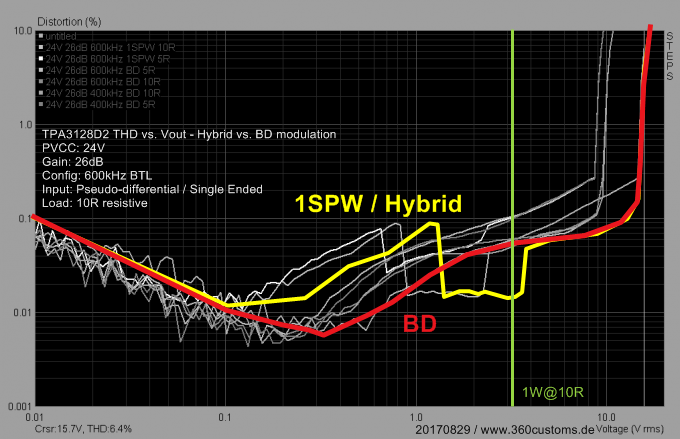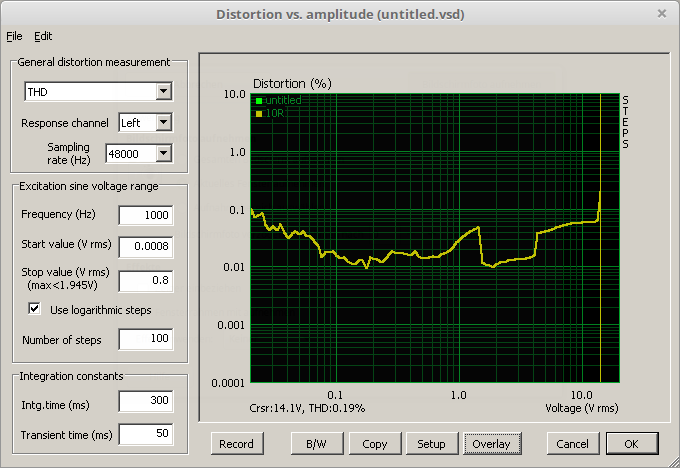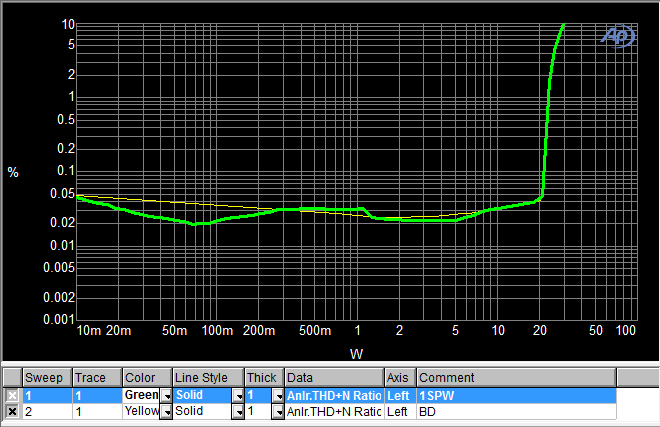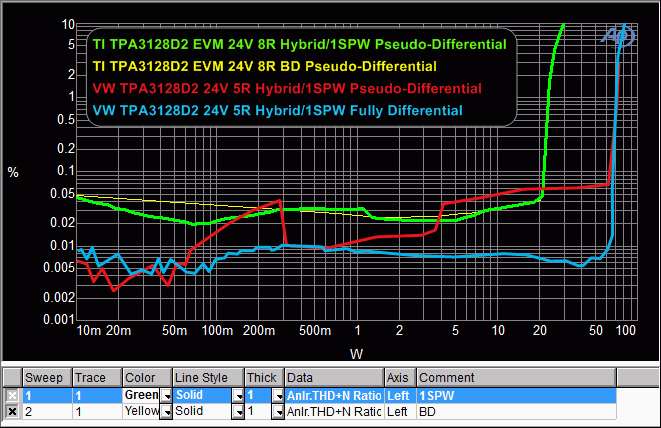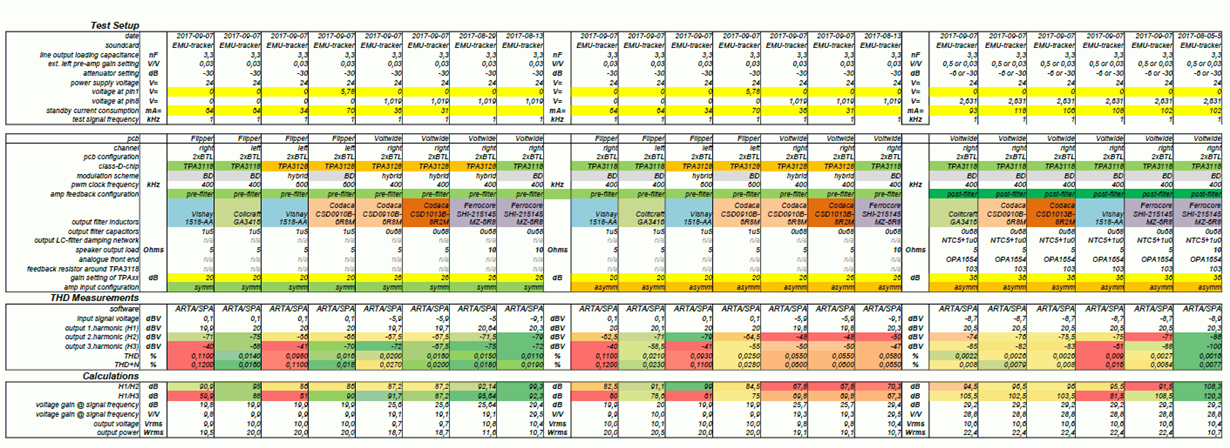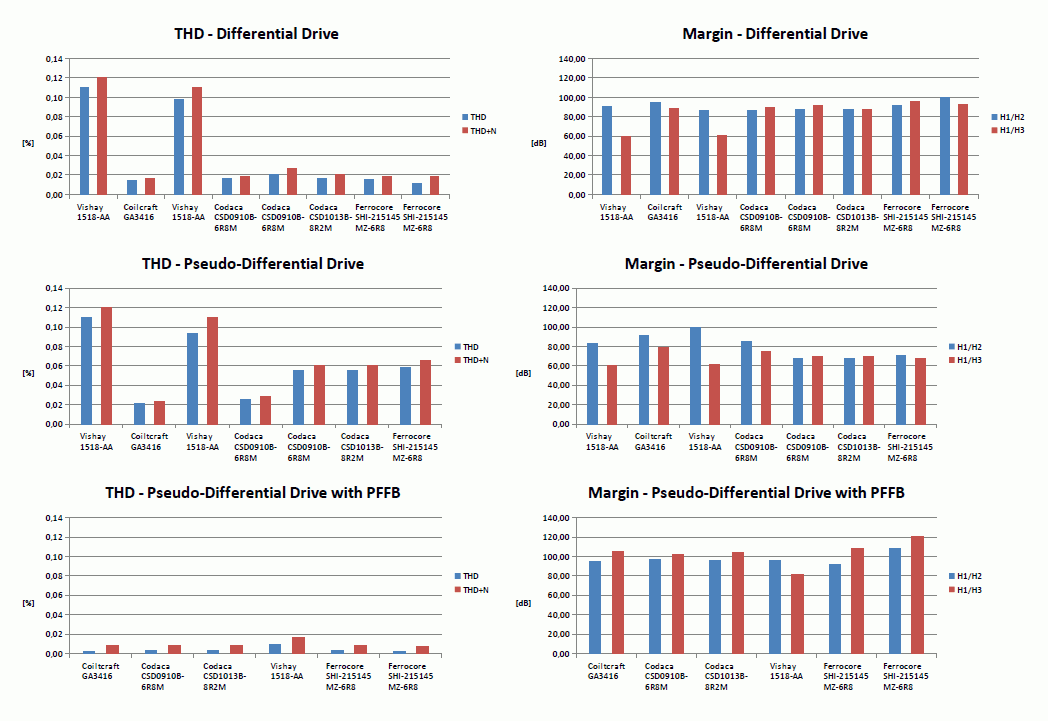Other Parts Discussed in Thread: STRIKE, TPA3118D2
Dear TI,
we came across some performance issues while testing 2 new amplifiers based on TPA3128D2 when running in a single-ended (pseudo-differential) input configuration as this is pretty much standard for consumers.
The board is configured as follows:
PVCC: 24V isolated linear bench power supply 150W
Gain: 26dB
Input-Config: Pseudo-Differential
fSW: 600kHz
Modulation: 1SPW aka "Hybrid"
Load: 5R/10R resistive
Config: 2xBTL
Measurement setup: EMU0202 with -30dB differential attentuator
THD Plot:
The modulation changes between 1.5Vrms and 4Vrms this can clearly be seen for 10R load. Is this to give better specs in the datasheet?
Changing modulation to BD is a game changer but still not the optimum.
Out of curiosity, we set up a different implementation (completely different board layout with high-power inductors "Ferrocore SHI-215145 MZ-6R8") which shows the following plot:
This measurement was done some 500km away from my lab, results are similar.
When we change the input configuration from pseudo-differential to fully-differential, the plot is pretty much spot on the datasheet specs:
Why does TI not mention this "poor" performance in pseudo-differential mode in the datasheet? Isn't it like 90% of the consumer products do only single-ended input configurations? Pretty disappointing.
Results from the testbench:
| input config | fully differential | pseudo-differential | pseudo-differential |
| output 1.harmonic (H1) dBV | 20.64 | 20 | 10 |
| output 2.harmonic (H2) dBV | -71.5 | -47 | -77 |
| output 3.harmonic (H3) dBV |
-75 |
-44 | -69 |
| H1/H2 dbV |
92.14 |
67 | 87 |
| H1/H3 dbV |
95.64 |
64 | 79 |
Conclusion:
1SPW/Hybrid is a nice powersaver, but does pretty poor THD performance when not driven fully differential. It would be nice if TI could make this more clear in the datasheet instead of "hiding" important informations. Is there any performance data available from the TI department for this chip when using pseudo-differential mode?
Thanks in advance!
Best regards,
Christian Weidner
www.360customs.de




